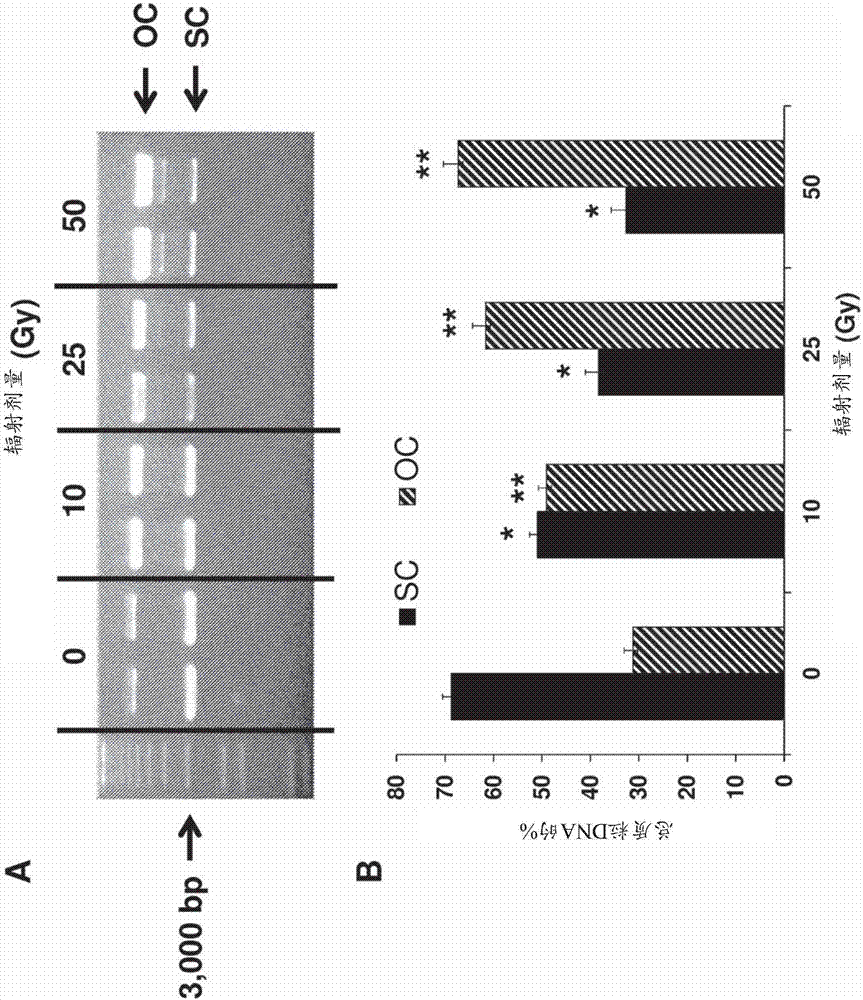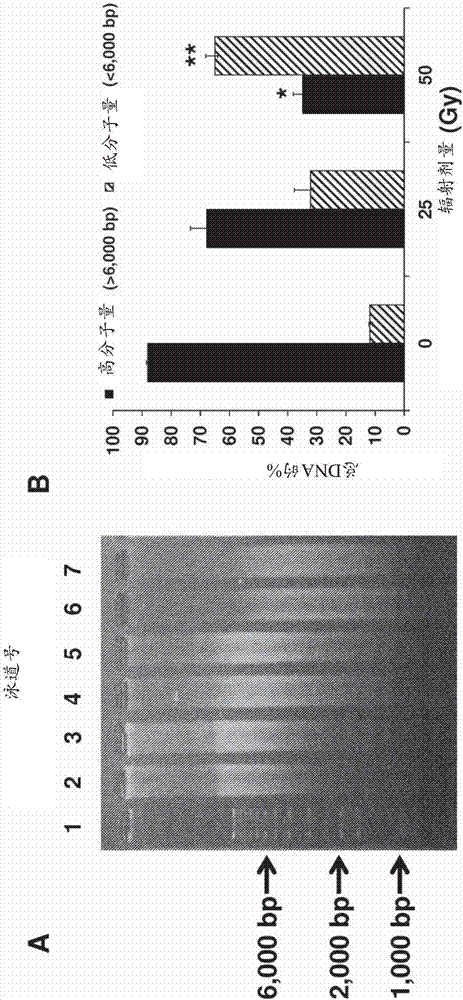Use of secoisolariciresinol diglucosides (sdgs) and related compounds for protection against radiation and chemical damage
A technology for ring-opening isolarches and glucosides, which can be applied in the directions of active ingredients of hydroxyl compounds, drug combinations, plant raw materials, etc., can solve problems such as difficulty in finding chemopreventive agents
- Summary
- Abstract
- Description
- Claims
- Application Information
AI Technical Summary
Problems solved by technology
Method used
Image
Examples
example 1
[0156] Synthetic (S,S) and (R,R)-seoisolarixin diglucoside (SDG) protects naked plasmid and genomic DNA from γ-irradiation damage
[0157] As a result of nuclear disintegration, three types of radiation are produced, alpha (α) with a positive charge, beta (β) with a negative charge and gamma (γ) with no charge. In the case of gamma-radiation, the electromagnetic waves have a very small wavelength (. OH). These hydroxyl radicals ( . OH) is a major source of ionizing radiation-induced damage to cellular components, including lipids, proteins, and genomic DNA. Hydroxyl radicals produced by gamma radiation ( . OH) cause single-strand and double-strand breaks in DNA. ( . OH) free radicals damage DNA by abstracting H atoms from deoxyribose and purine and pyrimidine bases or adding to the double bonds of the bases. These reactions result in DNA strand breaks.
[0158] Compounds with antioxidant and free radical scavenging properties can act as radioprotectants and prevent radia...
example 2
[0199] Radioprotective properties of lignin secoisolaricidin diglucoside (SDG) in lung cells
[0200] Radiation damage to cells is initiated by the generation of reactive oxygen species (ROS). The spectrum of damage caused by ROS to cellular mechanisms includes lipid peroxidation, DNA-protein cross-linking, base modification, adduct formation and single- and double-strand breaks (DNA SSBs and DSBs). These modifications have been implicated in radiation-induced apoptosis and cell death. Since cellular DNA damage is a known determinant in radiation-induced cell death, significant efforts have been made to identify and develop phenotypes that can protect DNA from radiation by interfering with free radical responses or by modulating radiation-induced apoptosis. Damaged reagents.
[0201] Protection from radiation-induced genotoxicity can be achieved by the presence of antioxidants in the system at the time of exposure. Since antioxidants can be ROS scavengers that interfere wit...
example 3
[0254] Hypochlorite ion scavenging by secoisolaricidin diglucoside (SDG): A novel mechanism by which SDG protects genomic DNA from radiation
[0255] Hypochlorous acid (HOCl), a potent oxidant, is produced by neutrophils through activated myeloperoxidase, which catalyzes the physiologically present chloride ions and hydrogen peroxide (H 2 o 2 ) between the responses. Activated neutrophils produce H 2 o 2 and superoxide anion O 2 · - . At physiological pH, HOCl and hypochlorite ions (ClO - )mixture. HOCl kills microorganisms through oxidative damage. However, excess production is known to cause damage to tissues. Hypochlorite modification of adenine nucleotides leads to the formation of chloramines, which appears to be the main mechanism of neutrophil-mediated toxicity.
[0256] HOCl and its conjugate base ClO - Has been shown to oxidize amino acids, peptides, proteins and lipids, and chlorinate bases in cellular DNA and RNA. HOCl / ClO - The reaction leads to the mo...
PUM
 Login to View More
Login to View More Abstract
Description
Claims
Application Information
 Login to View More
Login to View More - R&D
- Intellectual Property
- Life Sciences
- Materials
- Tech Scout
- Unparalleled Data Quality
- Higher Quality Content
- 60% Fewer Hallucinations
Browse by: Latest US Patents, China's latest patents, Technical Efficacy Thesaurus, Application Domain, Technology Topic, Popular Technical Reports.
© 2025 PatSnap. All rights reserved.Legal|Privacy policy|Modern Slavery Act Transparency Statement|Sitemap|About US| Contact US: help@patsnap.com



